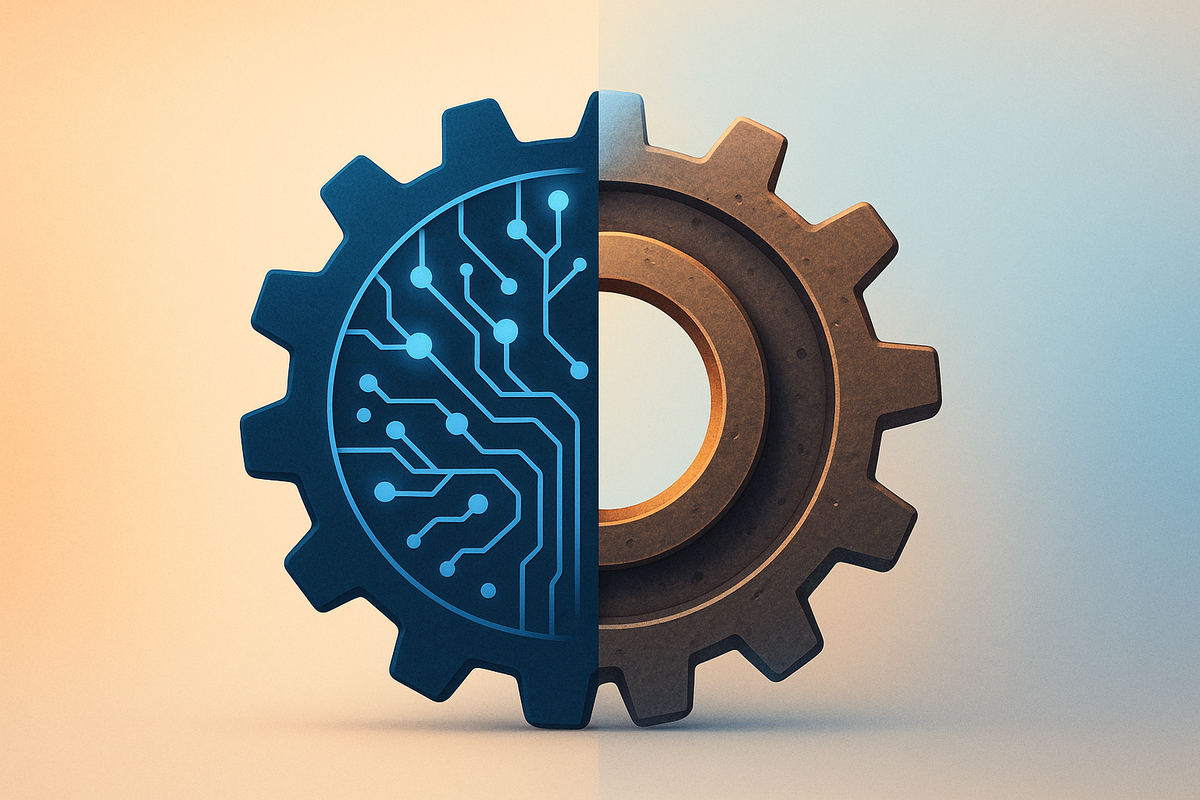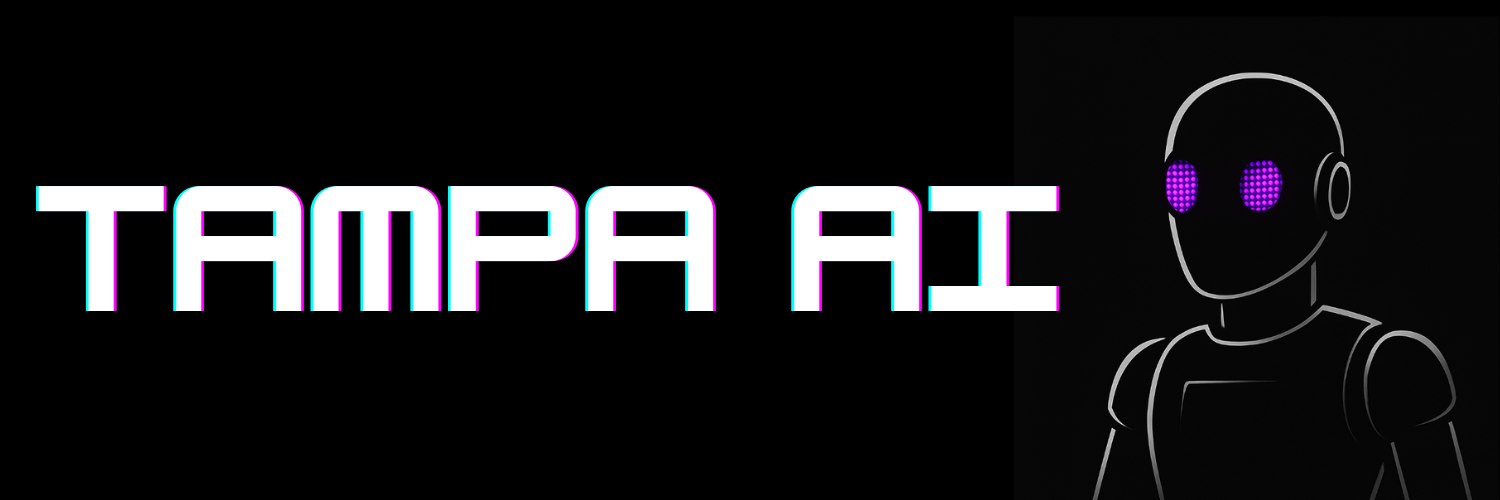AI vs Traditional Automation: A Cost-Benefit Analysis
Explore the differences between AI and traditional automation, their costs, benefits, and which is best suited for your business needs.

AI automation and traditional automation serve different needs, and choosing the right one depends on your business goals.
- AI Automation: Adapts over time, handles complex tasks, and offers high scalability. It requires a significant upfront investment ($20,000 to $1M+) but delivers long-term savings through efficiency and reduced downtime.
- Traditional Automation: Ideal for repetitive, rule-based tasks. It has lower upfront costs (e.g., $20,000–$150,000 per unit) but lacks flexibility and scalability.
Quick Comparison
| Feature | AI Automation | Traditional Automation |
|---|---|---|
| Cost | $20,000 to $1M+ upfront | $20,000 to $150,000 per unit |
| Scalability | Highly scalable | Limited by hardware |
| Flexibility | Learns and adapts | Fixed programming |
| Maintenance | $20,000–$80,000 annually | $3,000–$22,500 per unit |
| Best For | Dynamic, complex workflows | Stable, repetitive tasks |
Key Takeaway: If your business processes are dynamic and require adaptability, AI is a better fit. For simpler, repetitive tasks, traditional automation is more practical.
AI Agents vs Traditional Automation. Which is Better?
1. AI Automation Systems
AI automation systems are designed to process data intelligently and improve over time through learning. Below is a breakdown of typical investment tiers to help you understand the costs and components involved.
Investment Tiers for AI Automation
| Complexity Level | Initial Investment | Key Components | Annual Maintenance |
|---|---|---|---|
| Low-complexity | $5,000 - $20,000 | Pre-trained models, basic automation | $20,000 - $35,000 |
| Medium-complexity | $30,000 - $100,000 | Custom integrations, advanced workflows | $40,000 - $60,000 |
| High-complexity | $200,000 - $1,000,000 | Custom AI models, enterprise-scale solutions | $60,000 - $80,000 |
Initial costs often include strategic planning ($5,000 - $25,000) and infrastructure setup. Ongoing expenses should account for maintenance, updates, and hiring specialized talent.
The Value of AI Automation
Recent industry data highlights the potential of AI automation. For example, 97% of entrepreneurs foresee operational improvements with AI adoption, and 64% expect stronger customer relationships and business growth. These outcomes are supported by measurable results in areas like:
-
Operational Efficiency
AI automation reduces manual work and streamlines processes. A logistics company, for instance, implemented AI-driven inventory management and cut operational costs by 20%. -
Scalability Options
Whether you choose in-house development or outsourcing, costs vary. Developing AI prototypes internally can cost $14,200 to $28,100, while outsourcing can lower that range to $7,100 to $13,900. -
Resource Requirements
Cloud-based AI solutions, available through subscriptions ($15,000 to $100,000 annually), offer flexibility. On-premises systems, though more expensive upfront, provide greater control. Additionally, AI consultants charge $200 to $350 per hour, while dedicated specialists range from $25 to $49 per hour.
Organizations investing in AI automation can expect long-term benefits such as increased efficiency, fewer errors, and better decision-making capabilities.
2. Standard Automation Tools
Standard automation tools often come with hefty upfront costs. Here's a closer look at the financial and operational trade-offs compared to AI-driven solutions.
Investment Breakdown
Traditional automation tools involve several cost components:
| Component Type | Initial Cost | Annual Maintenance |
|---|---|---|
| Collaborative Robots | $20,000 - $50,000/unit | $3,000 - $7,500 |
| Industrial Robots | $50,000 - $150,000/unit | $7,500 - $22,500 |
| Mobile Robots | $30,000 - $100,000/unit | $4,500 - $15,000 |
| Control Software | $10,000 - $50,000 | $1,500 - $7,500 |
| Integration Services | $100 - $200/hour | Varies |
Implementation Considerations
Setting up traditional automation systems involves detailed planning and substantial upfront expenses. Here's what you need to account for:
Hardware Requirements
- Sensors and actuators, costing between $1,000 and $5,000 each
- Spare parts inventory, typically around 10% of hardware costs annually
- Infrastructure changes to accommodate new equipment
Software and Integration
- Custom integration software, starting at $20,000
- Annual licensing fees ranging from $10,000 to $50,000
- Maintenance contracts, usually 15–20% of the initial setup cost
These ongoing hardware and software expenses can make scaling these systems challenging over time.
Scalability Challenges
Traditional automation relies on fixed programming, which makes it less flexible over time. Additionally, training employees to operate these systems can cost between $5,000 and $10,000 per person. These factors highlight the importance of finding cost-efficient alternatives.
Cost-Effective Implementation Strategies
To mitigate high costs, businesses can explore more budget-friendly approaches:
Incremental Automation
Instead of automating everything at once, companies can implement automation in phases. This allows teams to adapt gradually while keeping costs in check.
Turnkey Solutions
Pre-packaged automation systems combine hardware, software, and integration services. These solutions simplify deployment and streamline maintenance processes.
Key Benefits and Limitations
Understanding the pros and cons of AI-driven and traditional automation can guide organizations in making smarter technology investments. Here's a breakdown of the main factors for each approach.
Comparative Analysis
| Aspect | AI Automation | Traditional Automation |
|---|---|---|
| Scalability | Highly scalable with cloud options | Limited by fixed hardware |
| Flexibility | Learns and adapts over time | Fixed programming |
| Decision Making | Handles complex, pattern-based decisions | Restricted to rule-based decisions |
Now, let’s dive deeper into what makes each approach stand out - and where they fall short.
AI Automation Strengths
AI offers continuous operation, handles large-scale data, and learns from new situations. Key benefits include:
- 24/7 operation without breaks or fatigue
- Processing massive data volumes quickly and efficiently
- Learning and improving from new scenarios
Cost Savings:
Around 59% of businesses report saving money by using AI to reduce expenses and streamline resources.
Traditional Automation Advantages
Traditional automation thrives on consistency and reliability. It’s ideal for repetitive tasks and is particularly useful in industries with strict regulations, thanks to its predictable performance and established maintenance processes.
Limitations
AI Limitations:
- Implementation costs can range anywhere from $20,000 to several million dollars.
- Requires regular monitoring, retraining, and security updates.
- Struggles with tasks needing emotional intelligence or creativity.
Traditional Automation Limitations:
- Lacks flexibility, making it less effective for workflows that frequently change.
Implementation Considerations
The choice between AI and traditional automation depends on your operational needs. If your processes are dynamic and complex, AI’s ability to adapt might be a better fit. On the other hand, if your workflows are stable and repetitive, traditional automation could be more practical.
Cost-Benefit Framework
Talent Costs:
Hiring AI experts can be expensive, with salaries ranging from $100,000 to $300,000 annually. This adds to the overall investment for AI-powered solutions.
Conclusion
AI tools bring clear benefits in flexibility and scalability. A striking 97% of entrepreneurs expect to see operational improvements from adopting AI. It's no surprise that intelligent automation is becoming more popular.
Businesses are already seeing results: 59% report saving money, while 42% mention smoother operations thanks to AI. The key to success lies in blending human expertise with machine capabilities.
Here are some practical steps to get started:
- Start Small and Grow Strategically: Focus on areas where you can easily measure success and see a return on investment.
- Track Results: Compare efficiency improvements and cost savings to your initial benchmarks.
- Stay Updated: Keep up with the latest AI developments and refine your strategies as needed.
"AI is crucial in today's business because it can improve efficiencies, save time, and reduce operational costs." - Ben Pedrazzini
When businesses combine AI with human oversight, they often see the best outcomes. In fact, 64% of business owners view AI as a driver for better customer relationships and growth. AI has become essential for staying competitive and thriving in the long term.
Aligning the right technology with your business goals sets the stage for growth and success.
FAQs
What are the long-term costs of using AI automation compared to traditional automation?
The long-term costs of AI automation can vary depending on factors like cloud storage, API usage, model retraining, and regular security updates. While these ongoing expenses may add up, they often come with the benefit of improved scalability and adaptability.
Traditional automation typically involves lower recurring costs but may lack the flexibility and advanced capabilities of AI-driven solutions. For businesses, it’s crucial to weigh these costs against the potential efficiency gains and long-term value AI can provide. A well-planned adoption strategy can help manage expenses while maximizing the benefits of AI automation.
How can businesses decide whether AI automation or traditional automation is the better fit for their needs?
To determine whether AI automation or traditional automation is the better fit, businesses should evaluate their goals and priorities. If the focus is on enhancing customer experiences with personalized, data-driven interactions, AI is often the better choice. On the other hand, traditional automation is ideal for tasks that require precision, consistency, and rule-based processes, such as back-office operations.
Key factors to consider include cost, return on investment, scalability, and integration capabilities. AI solutions offer flexibility and the ability to improve over time by learning from data, while traditional automation excels in stable, repetitive workflows. By aligning these technologies with their specific needs, businesses can optimize efficiency and long-term success.
What challenges might businesses encounter when adopting AI automation instead of traditional automation?
Adopting AI automation can present several challenges for businesses compared to traditional automation. One of the main hurdles is the higher upfront costs, which stem from the development, integration, and maintenance of AI systems. These solutions often require advanced infrastructure and specialized expertise, which can make the initial investment significant.
Another challenge is the complexity of integration. AI systems often need to interact with multiple existing tools and platforms, which may require businesses to assess and upgrade their current technology stack. Additionally, ongoing expenses such as hiring skilled professionals, training staff, and maintaining AI systems can add to the overall cost.
Despite these challenges, businesses that carefully plan their implementation and allocate resources effectively can unlock the long-term benefits of AI, such as scalability, improved efficiency, and greater adaptability to changing market demands.

